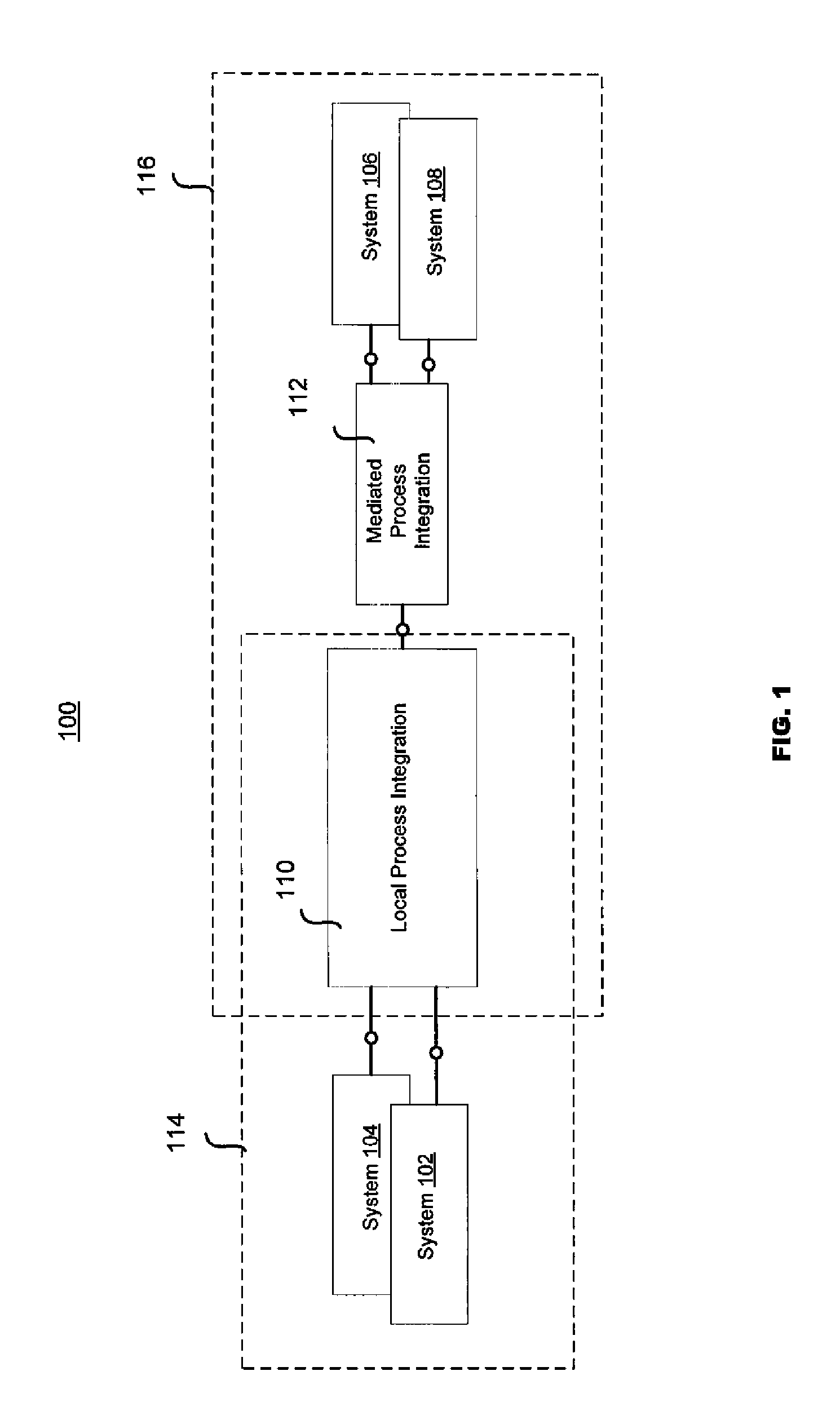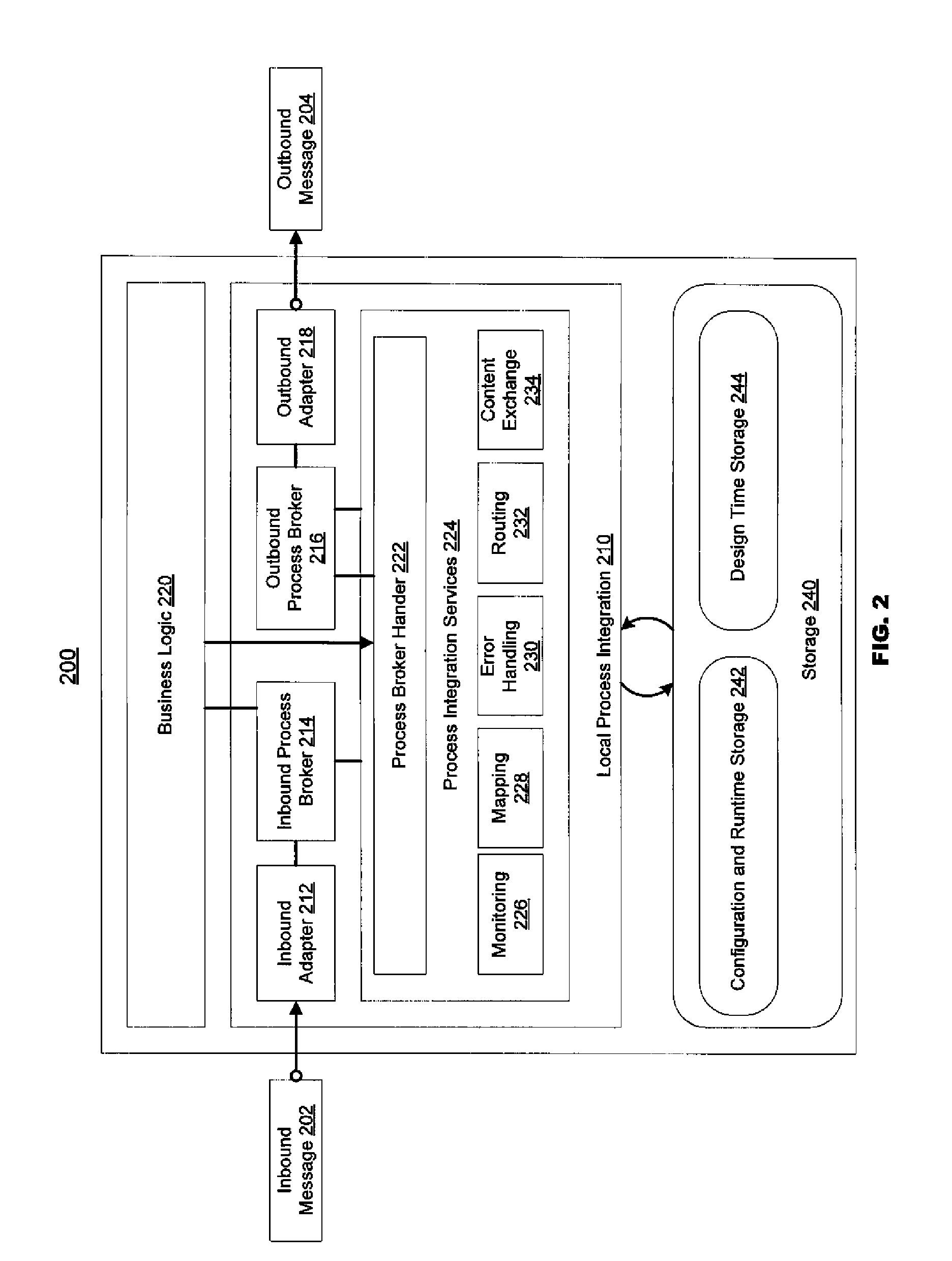System and method for a process broker and backend adapter based process integration
a process broker and backend adapter technology, applied in the field of computer systems, can solve the problems of complex network of connections, hubs can only route messages, and cannot manage the collaborative sharing of information, so as to avoid additional format transformation steps
- Summary
- Abstract
- Description
- Claims
- Application Information
AI Technical Summary
Benefits of technology
Problems solved by technology
Method used
Image
Examples
Embodiment Construction
[0087]Embodiments of the present invention may provide a local process integration component to facilitate process integration. The local process integration component may include an adapter, a process broker and a process broker handler. The process broker may collaborate with the business logic to perform business-centric integration logic (e.g. to decide when integration is necessary), and with adapters for interface mapping. The framework is based on a toolkit and generator approach. For inbound communication, the adapter is responsible for control flow while the process broker handler provides generic services. For outbound communication, the process broker is responsible for control flow while the process broker handler provides generic services. The control flow orchestration is uniformed by code generation based on templates. The templates may be provided by the toolkit and / or by an IDE customized for the development of applications to be integrated with external application...
PUM
 Login to View More
Login to View More Abstract
Description
Claims
Application Information
 Login to View More
Login to View More - R&D
- Intellectual Property
- Life Sciences
- Materials
- Tech Scout
- Unparalleled Data Quality
- Higher Quality Content
- 60% Fewer Hallucinations
Browse by: Latest US Patents, China's latest patents, Technical Efficacy Thesaurus, Application Domain, Technology Topic, Popular Technical Reports.
© 2025 PatSnap. All rights reserved.Legal|Privacy policy|Modern Slavery Act Transparency Statement|Sitemap|About US| Contact US: help@patsnap.com



